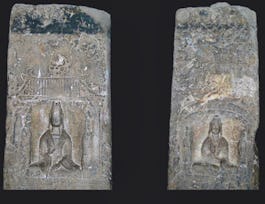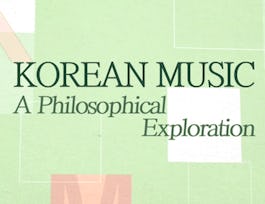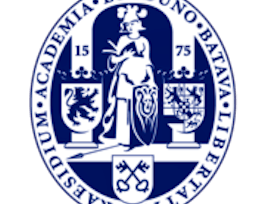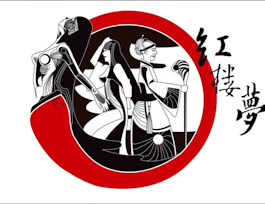This course will focus on the historical and cultural background, literary aesthetics, music, and performance of Kunqu, China’s classical opera. After viewing the lecture videos presented by scholars and renowned maestros in the field of Kunqu, students’ understanding and appreciation of Chinese performing arts, classical literature and traditional culture will be enhanced.


The Beauty of Kunqu Opera
Taught in English
Some content may not be translated
8,503 already enrolled
(201 reviews)
Details to know

Add to your LinkedIn profile
7 quizzes
See how employees at top companies are mastering in-demand skills


Earn a career certificate
Add this credential to your LinkedIn profile, resume, or CV
Share it on social media and in your performance review

There are 7 modules in this course
Welcome to The Beauty of Kunqu Opera! The following lecture videos will give you some ideas of the historical background and characteristics of Kunqu, China’s classical opera that originated more than 600 years ago and blossomed during the late Ming and early Qing dynasties (around 16th – 17th centuries). The introduction is followed by excerpts and analysis of The Peony Pavilion, Kunqu’s masterpiece. The poetic artistry shown in the arias, dialogues and dance movement of the characters exemplifies the aesthetic achievement of Kunqu.
What's included
5 videos1 quiz
Kunqu means music/song (qu) that originated from the district of Kunshan, Jiangsu province. The word itself shows the fundamental role played by music in this Chinese classical opera. This week, Prof. Lindy Li Mark from the California State University, East Bay will talk about the musical aspect of Kunqu. What are the musical features of Kunqu melodies? What is tune-type and what does a traditional score of Kunqu look like? How is the music of Kunqu different from that of the Western operas? What instruments are used in a Kunqu ensemble? Answers to these questions can be found in the lecture videos.
What's included
5 videos1 quiz
Just like other genres of Chinese opera, Kunqu has a broad range of role-types, such as male (sheng), female (dan), painted face (jing) and comic (chou). From this week on, legendary performing artists who have devoted their whole lives to Kunqu will talk about the role-types they specialize in and their facial makeup, costume, singing, speaking and movements. In addition, they will demonstrate some of the very important repertoires in Kunqu and share with us the characteristics of each of them. This week, Maestros Yue Meiti and Cai Zhengren will talk about one of the most important role-types of Kunqu, the male role-type. Classical plays such as The Jade Hairpin, The Shepherd, and The Palace of Eternal Life will be introduced as well.
What's included
6 videos1 quiz
The female role-type is another prominent role-type of Kunqu and can be divided into a number of subtypes. In this week lively lectures and demonstration by Maestros Zhang Jingxian (mature female), Zhang Jiqing (young noble lady), Liang Guyin (vivacious young female) and Wang Zhiquan (martial female) will show us the charisma of the diversified female characters on the Kunqu stage from Chinese classics such as The Lute, The Peony Pavilion and Journey to the West.
What's included
9 videos1 quiz
The colorful and complex facial makeup of the painted face role-type is probably the most noticeable feature in the eyes of the audience. But what does facial makeup mean and how is it done? This week, Maestro Hou Shaokui will unfold the mysteries for us. He will also share with us his portrayal of Lord Guan, a well-known household character based on the most famous Chinese historical novel Romance of the Three Kingdoms. What is more, this unique character combines the essence of both the painted face and warrior role-types.
What's included
5 videos1 quiz
When appreciating the well written script and the beautiful melody of Kunqu, sometimes audiences just want a good laugh in the theatre. This cannot be done without the contribution of the comic role-type. This week, Maestro Zhang Mingrong will explain the characteristics of the different subtypes of the comic role-type, namely young chou, fu chou and martial/acrobatic chou. From Maestro Zhang’s demonstration we will also see that mastering the comic role-type requires much more skill than just natural talent.
What's included
4 videos1 quiz
Drawing examples from the production of The Peony Pavilion (Young Lover’s Edition) and The Jade Hairpin (New Edition), Prof. Kenneth Hsien-yung Pai will illustrate how Kunqu today can attract the younger generation by adding modern elements in stagecraft while preserving the basic aesthetics of Kunqu.
What's included
4 videos1 quiz
Instructors



Offered by
Recommended if you're interested in Music and Art

The Chinese University of Hong Kong

Sungkyunkwan University

Universiteit Leiden

National Taiwan University
Why people choose Coursera for their career




Learner reviews
Showing 3 of 201
201 reviews
- 5 stars
86.56%
- 4 stars
10.44%
- 3 stars
1.99%
- 2 stars
0.49%
- 1 star
0.49%

Open new doors with Coursera Plus
Unlimited access to 7,000+ world-class courses, hands-on projects, and job-ready certificate programs - all included in your subscription
Advance your career with an online degree
Earn a degree from world-class universities - 100% online
Join over 3,400 global companies that choose Coursera for Business
Upskill your employees to excel in the digital economy
Frequently asked questions
Access to lectures and assignments depends on your type of enrollment. If you take a course in audit mode, you will be able to see most course materials for free. To access graded assignments and to earn a Certificate, you will need to purchase the Certificate experience, during or after your audit. If you don't see the audit option:
The course may not offer an audit option. You can try a Free Trial instead, or apply for Financial Aid.
The course may offer 'Full Course, No Certificate' instead. This option lets you see all course materials, submit required assessments, and get a final grade. This also means that you will not be able to purchase a Certificate experience.
When you purchase a Certificate you get access to all course materials, including graded assignments. Upon completing the course, your electronic Certificate will be added to your Accomplishments page - from there, you can print your Certificate or add it to your LinkedIn profile. If you only want to read and view the course content, you can audit the course for free.
You will be eligible for a full refund until two weeks after your payment date, or (for courses that have just launched) until two weeks after the first session of the course begins, whichever is later. You cannot receive a refund once you’ve earned a Course Certificate, even if you complete the course within the two-week refund period. See our full refund policy.


